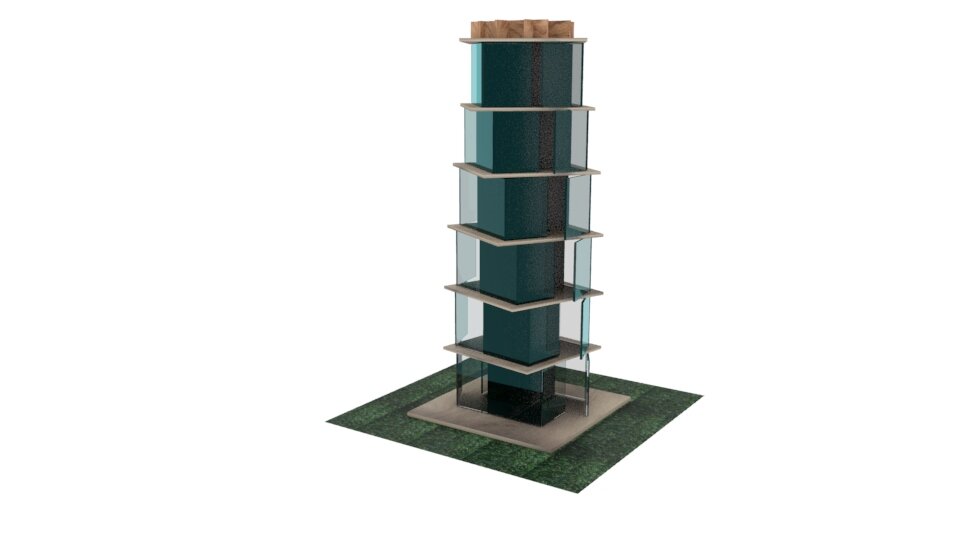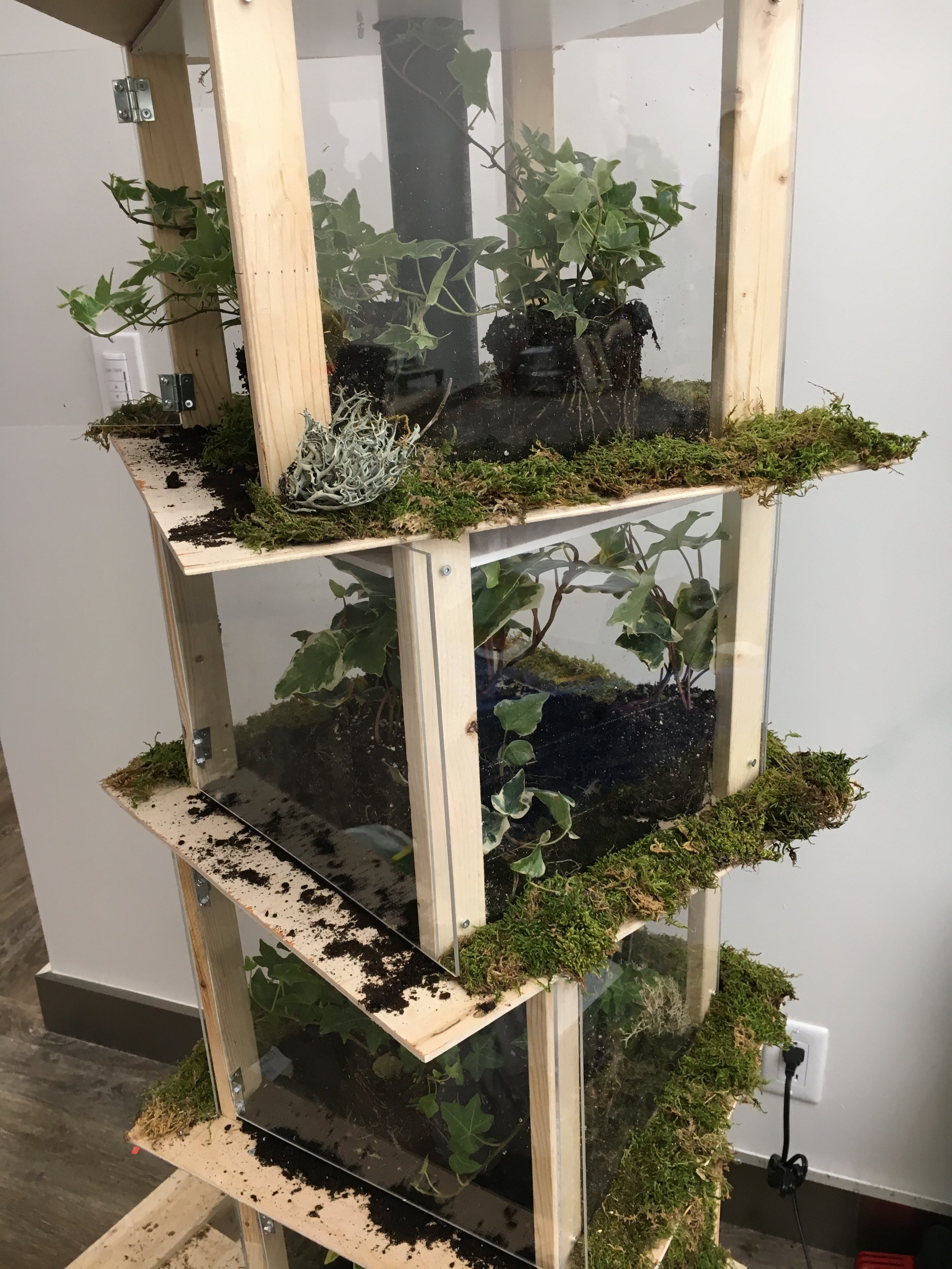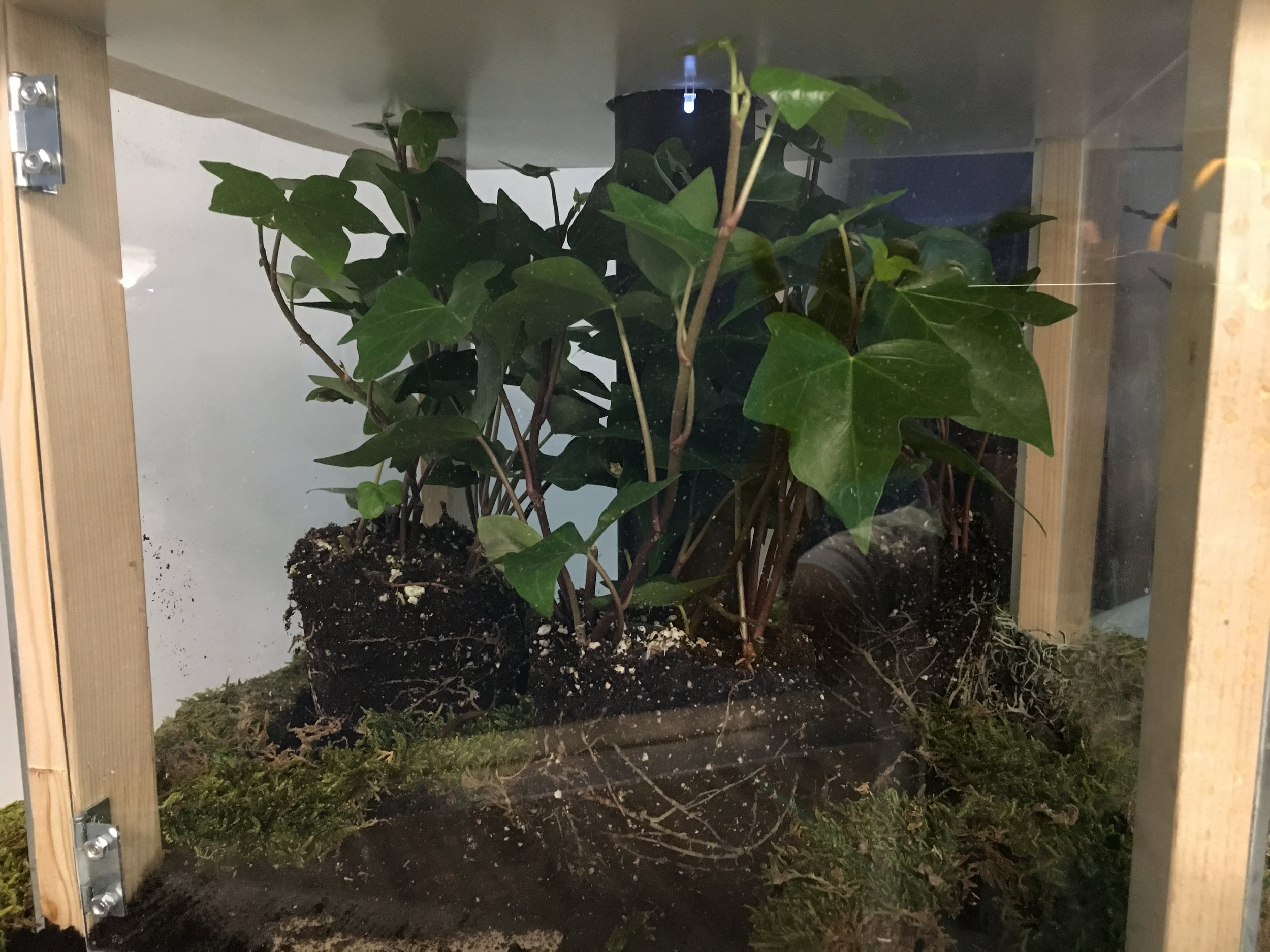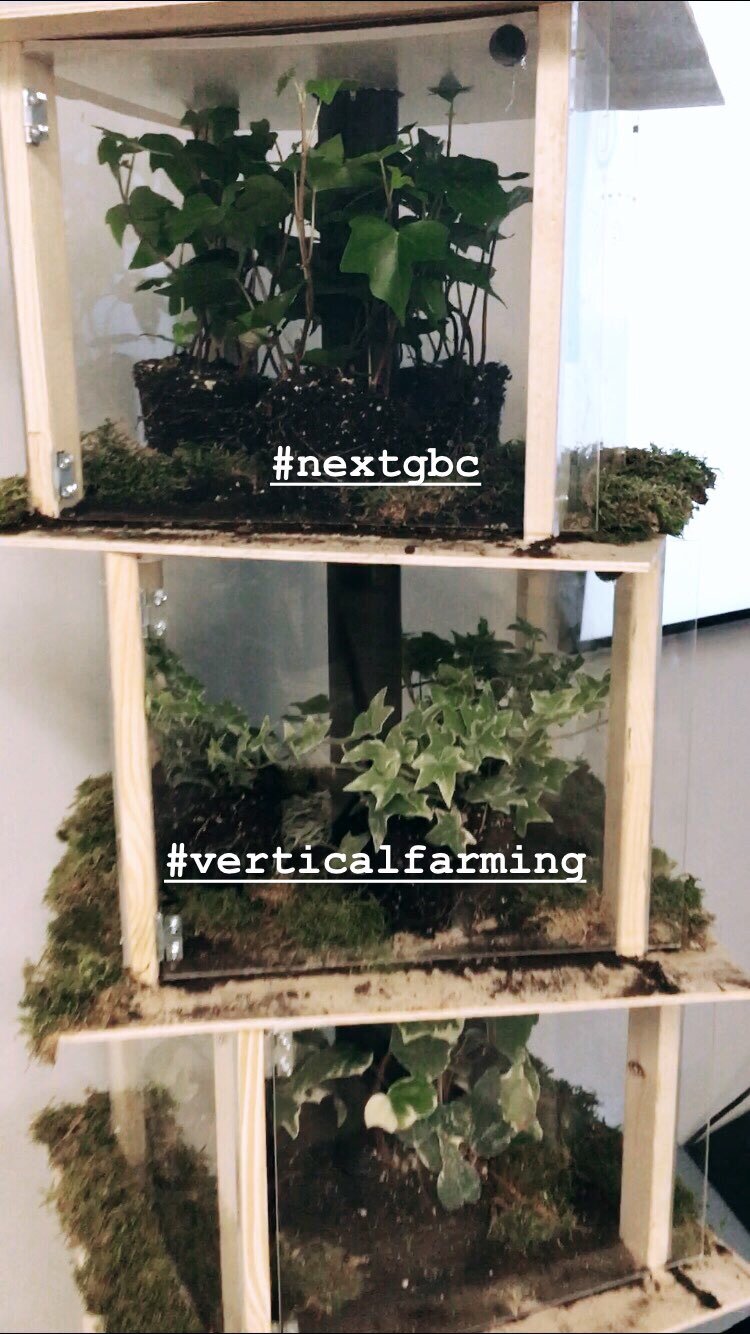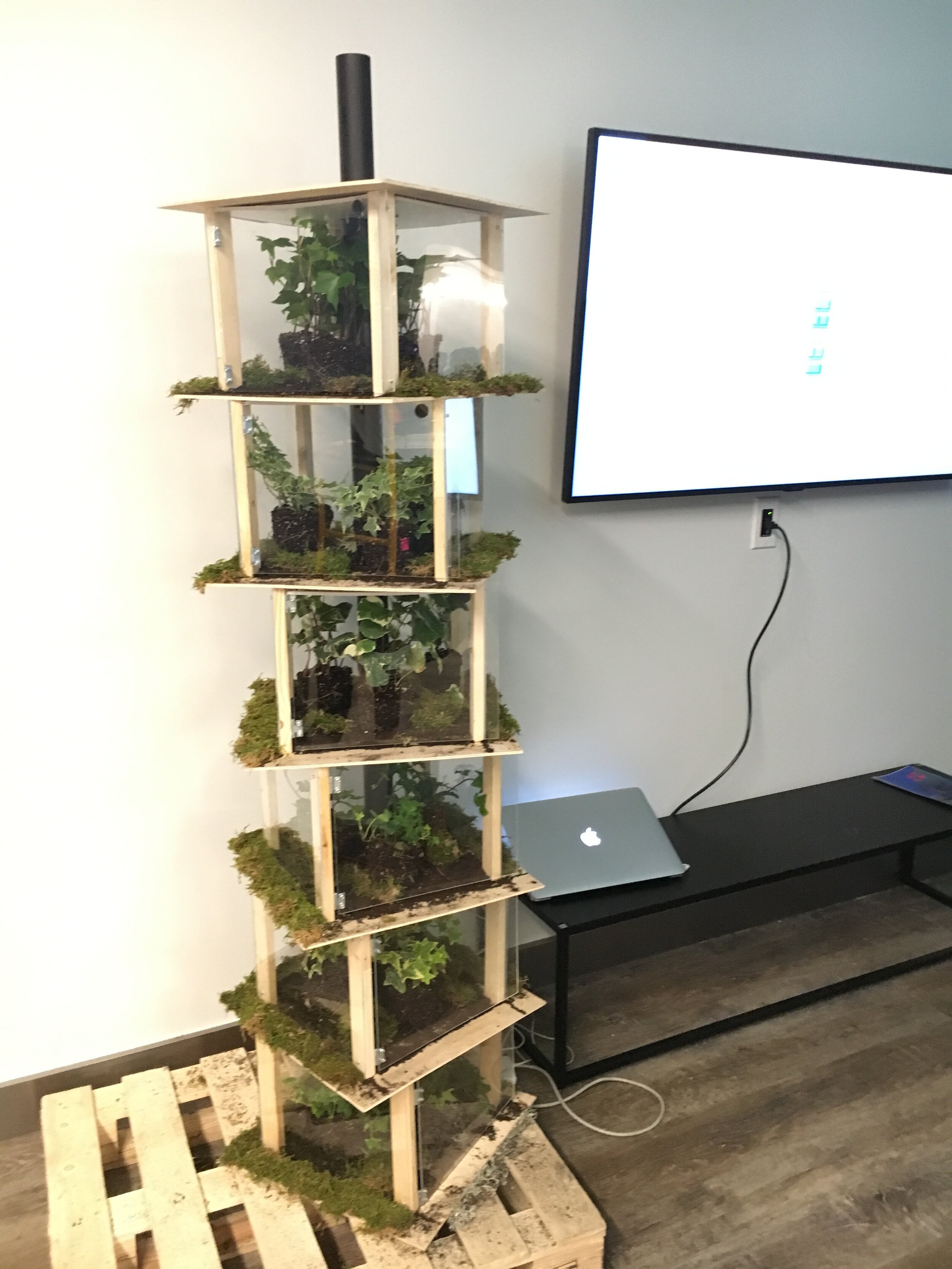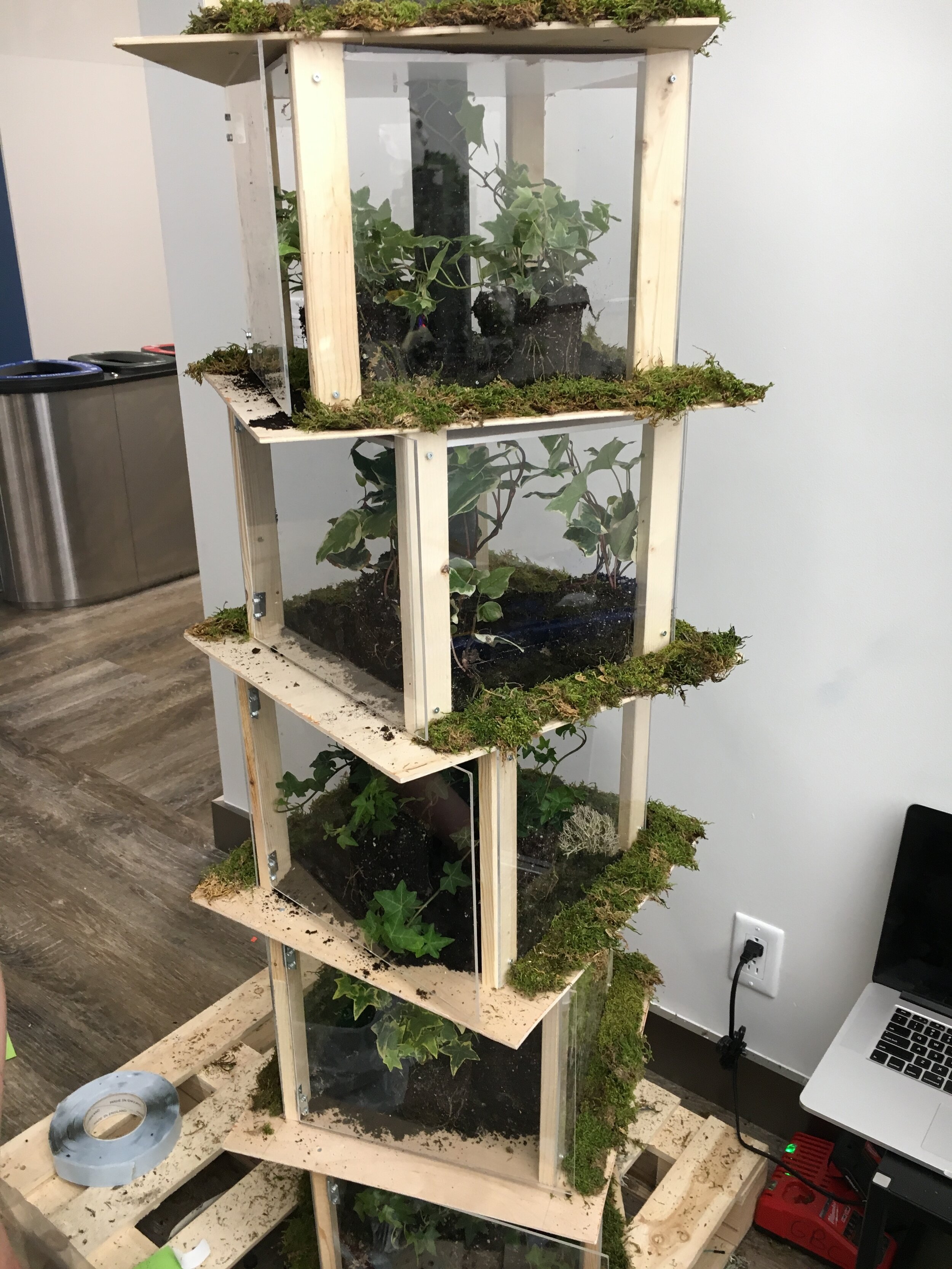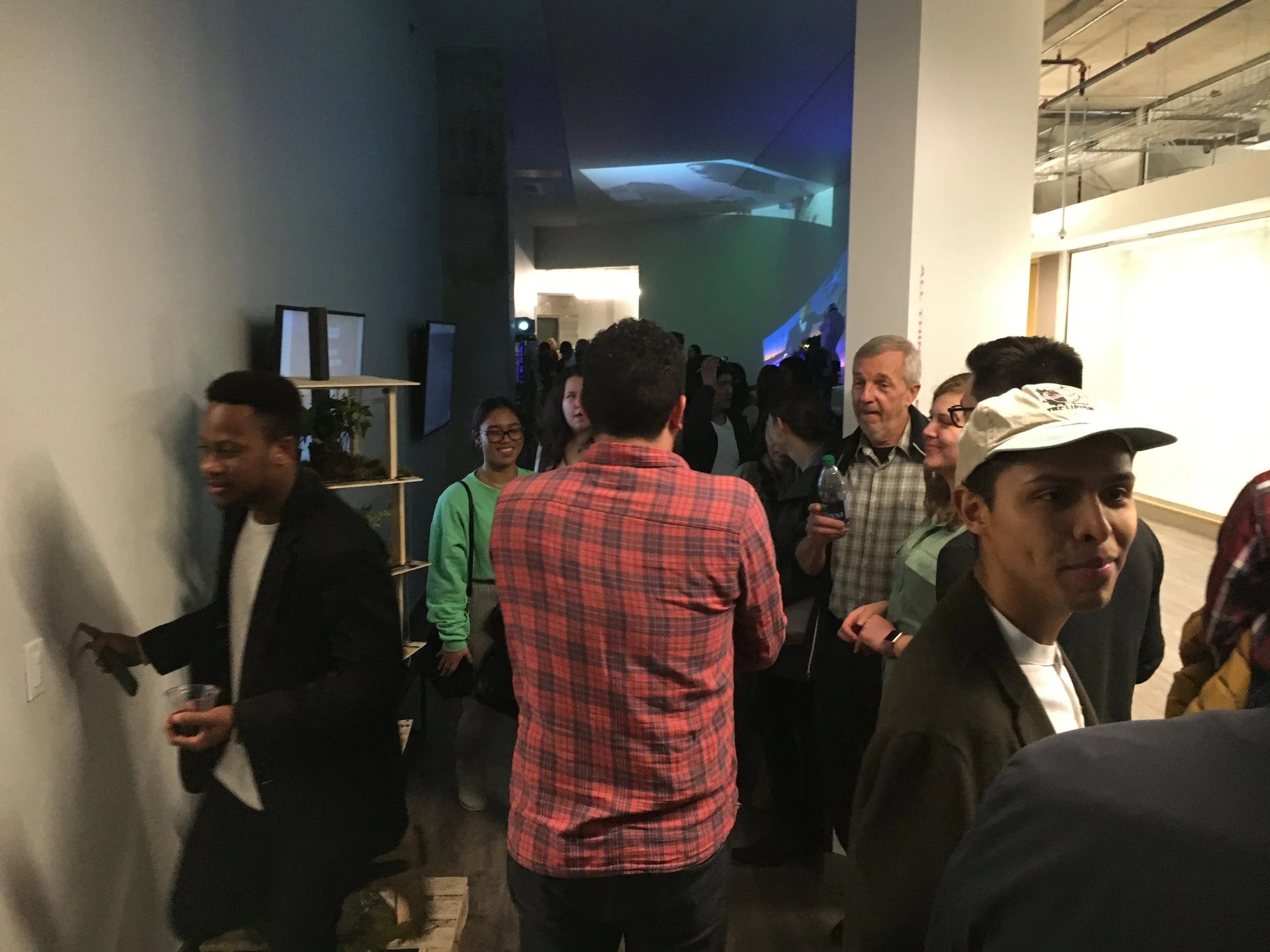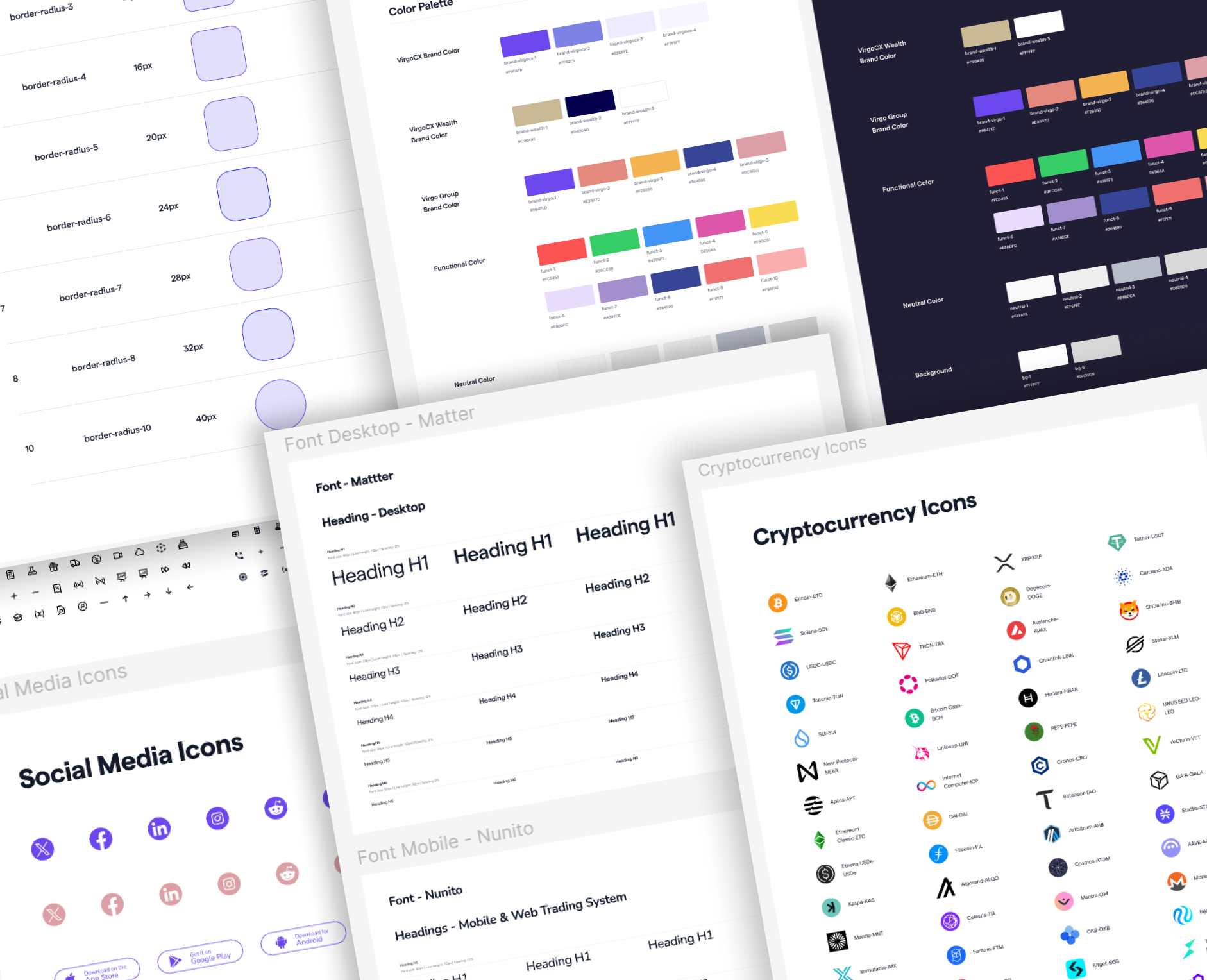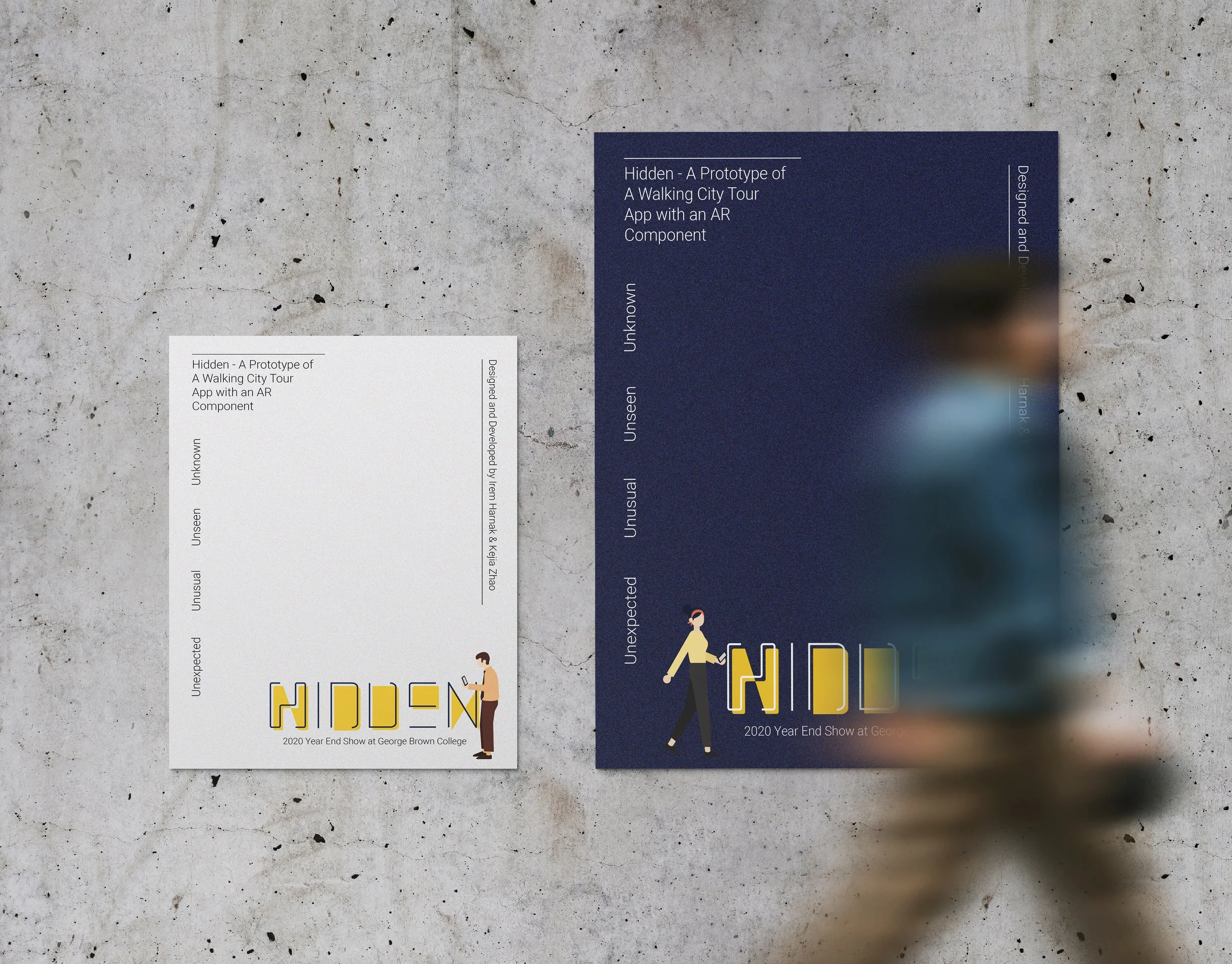Vertical Farming Interactive Installation
BRIEF
With a host of new technologies that challenge boundaries of space, time and connectedness, what does “off-the-grid” living look like today? How does millennium-era survival gear allow us to immerse ourselves in far-off lands, or on the other hand, how can we use spaces and products to create micro-zones that are distinct and protected from hostile environments? How can we use readily available tools and technology to become self-sufficient?
The theme is based on autonomous living in the digital age. How are we able to explore our autonomy? How are we use technologies to define the future look like?
PROJECT INCLUDED
UX Research | Interaction Design | Motion Graphic | UI Design | 3D Modelling
UNDERSTANDING
The theme was quite broad and abstract, there might be a hundred of answers when being asked “What is the most important for living autonomously?” however, thinking of living autonomously reminded me of the most essential things that we, as human beings, all need, which are food and water. These are what we need for survival, so either food or water could be direction of further exploration. The ideation started from this point, food, water, agriculture, food processing, food waste, food production …
Food was decided to be the direction that we would go for after we did a bunch of researches, so how food can be related to autonomy?
UX RESEARCH
Edible growth is very inspiring as it is creating something DIY and healthy with technology, also it is reducing carbon footprint, and rapidly reducing food waste, and it shows how to be back with basics where we create our own food with fermentation and photosynthesis. Most importantly, it creates the opportunity of being self sufficient as well as creative!
HOW MIGHT WE CHANGE THE WAY WE PRODUCE AND CONSUME FOOD?
This is the key question that led us to explore the alternative way of future food production as well as consumption, and VERTICAL FARMING was the idea that we finally conceptualized - a small installation that tells the food related stories and creates the fun interaction.
INTRO
Vertical Farming is an interactive installation that was created, developed, and installed by group of us. It brings the image of how future vertical farming can affect human beings by changing the way we produce and consume food in digital age.
Users will simply open the doors/windows of each level of installation, it triggers the motion graphic on the screen, which contains different stories, information and planting tips of crops. In addition, when users open the doors/windows, the tiny led lights are on for better seeing the real plants inside.
CONCEPT
In the future, a building can not only be the living space but also farming space in order to achieve better autonomous living for human beings.
Vertical farming is a concept that combines unique lifestyle and a system of food production in controlled in a building environment.
The type of farming is favorable to both consumer and producer. People who live in the building will be able to produce and consume food at the same time to reach the level of self-sufficiency.
It can potentially reduce all that space problems or even deforestation in the future. Vertical farming could be humanity’s future and problem solver.
LOGO
SIX CHAPTERS OF VERTICAL FARMING
Spinach - Exchange The Crops In The Shop
The newcomer becomes an occupant of the tower, and the system assign him or her crops to grow. They would exchange the crops in the first level’s common shop area. There are more retail space downstairs.
Blueberries - Food Processing Lab
To process excess or huge amount of raw crops, a designated food processing lab is the perfect solution for the occupant. This weeks occupants send the exchange system and asks for 6 jars of 10 oz blueberry jam and 2 packs of 200-gram dried blueberries.
Small Mushrooms - Recycle Waste or Energy Source
The building compostable waste becomes the nutrients for vertical farming and one of the recycled energy source for the building.
Basil - Hydroponics & Aeroponics
Basil’s level is the fundamental base of vertical farming -- Hydroponics, the technology to grow crops without soil, and Aeroponics, the tech to grow crops without soil but needs a little water.
Micro-Greens/Sprouts - A Healthy Community
The occupants might run into problems while growing and harvesting their crops. Exchanging ideas and experiences with vertical farming can further help to build a healthy community.
Cherry Tomatoes - Solar and Wind Power
As a representative of Photosynthesis, cherry tomato symbolize the usage of solar and wind power on top of the building to provide sustainable energy.
BROCHURE DESIGN
MOTION GRAPHICS OF STORIES/CROPS’ INFO
The aim of this project was delivering thoughtful stories, so we did many research about crops /plants that were easily grew in the building environment, as well as the requirements of conditions. Stories were created based on the research and future possibilities. Six stories of crops/plants were illustrated by using motion graphic. Creating visual and understandable experience for users was our one of main goals in this project.
Those motion graphics contain stories and crops’ information that loop during the exhibition, and opening a door at each level triggers the corresponding story and plays visuals on the screen next to the installation.
THE PROCESS OF DESIGNING AND BUILDING PHYSICAL MODEL
The process of designing and building the model was quite complicated. We spent time on finalizing a doable and understandable concept which fitted the theme of autonomous living - a vertical building allows people to grow and consume crops. Initially, I made a 3D model in Autodesk Maya and gave the basic idea how the final model could look like. Then I built the small version’s physical cardboard model so we could decide about the actual size of each pieces’ height and width.
The main materials we need were: wood sticks at four corners to hold each level, plywood for each base, and acrylic glass as doors/windows. Figuring out the actual sizes of each piece took a while,then we decided to build the model as the same height as a human. The most DIFFICULT part was cutting the plywood and acrylic glass! They didn’t come in as the sizes we wanted, so me and partner had to cut them all by hands! Cutting took very long time, then screwed each pieces together, so we spent almost 3 weeks to complete building the physical structure.
The 3D Model
Made in Autodesk Maya
The Physical Cardboard Model
It took me the whole weekend to measure all pieces, cut them off, and glue pieces together. In order to make it more visual, I twisted each level a little bit. All windows can be open and close.
The Physical Plywood Model
Me and my partner cut the wood sticks, plywood pieces, acrylic glass windows manually, and screwed and assembled each pieces together. It mostly took us a week to build it up.
The Final Installation
It took us three days to completely finish building the installation by drilling the holes in the middle of each plywood board, wiring a bunch of wires from the bottom to each level, gluing the grass on the edges of plywood boards, installing little LED lights, and putting real soils and plants inside each level.
CHALLENGES
The whole process of developing this interactive installation involved many technical challenges. The one of biggest challenges was making arduino work with processing. My partner was good at coding and he was mainly in charge of this part. The challenge of using arduino which required him to build codes in arduino and import from arduino to processing. The coding part was very tricky at that moment, we failed many times but luckily we got teachers to help in time.
THE FINAL INTERACTIVE INSTALLATION
Open the Window to the Future of Vertical Farming. Users will simply open the doors/windows of each level of installation, it triggers the motion graphic on the screen, which contains different stories, information and planting tips of crops. In addition, when users open the doors/windows, the tiny LED lights are on for better seeing the real plants inside. Users will be able to try different doors/windows to see the corresponding motion graphics, however, they have to close one door before opening another one.
When users are not interacting with installation, the looping motion graphic will stay on.
The final interactive installation “The Vertical Farming” was successfully chosen to be on the George Brown College 2019 “Next” Year End Show.
OUTCOMES
This is the project involved critical thinking as what the best solution for autonomous living might be for all of us, however, when we had the scope of what we planed to do in order to make our thoughts visible to audiences, challenges kept showing up:
The content of context - how does it make sense?
Design and build the installation - all DETAILS matter! even a tiny screw!
Technical issues as always - coding, arduino, processing, tons of wiring…
Hands on problems - acrylic glass cracked while drilling the hole, wasted materials due to mistakes…
The whole process was nonstop problem solving! When recalling everything, it was unbelievable that we made it under the limited time-frame. That was the most valuable part in this experience.
Plus, this installation was 100% handmade structure that we cut & assembled everything by hands. The efforts we made made us a biggest reward - The Vertical Farming was being demonstrated at 2019 School of Design NEXT Year End Show.







